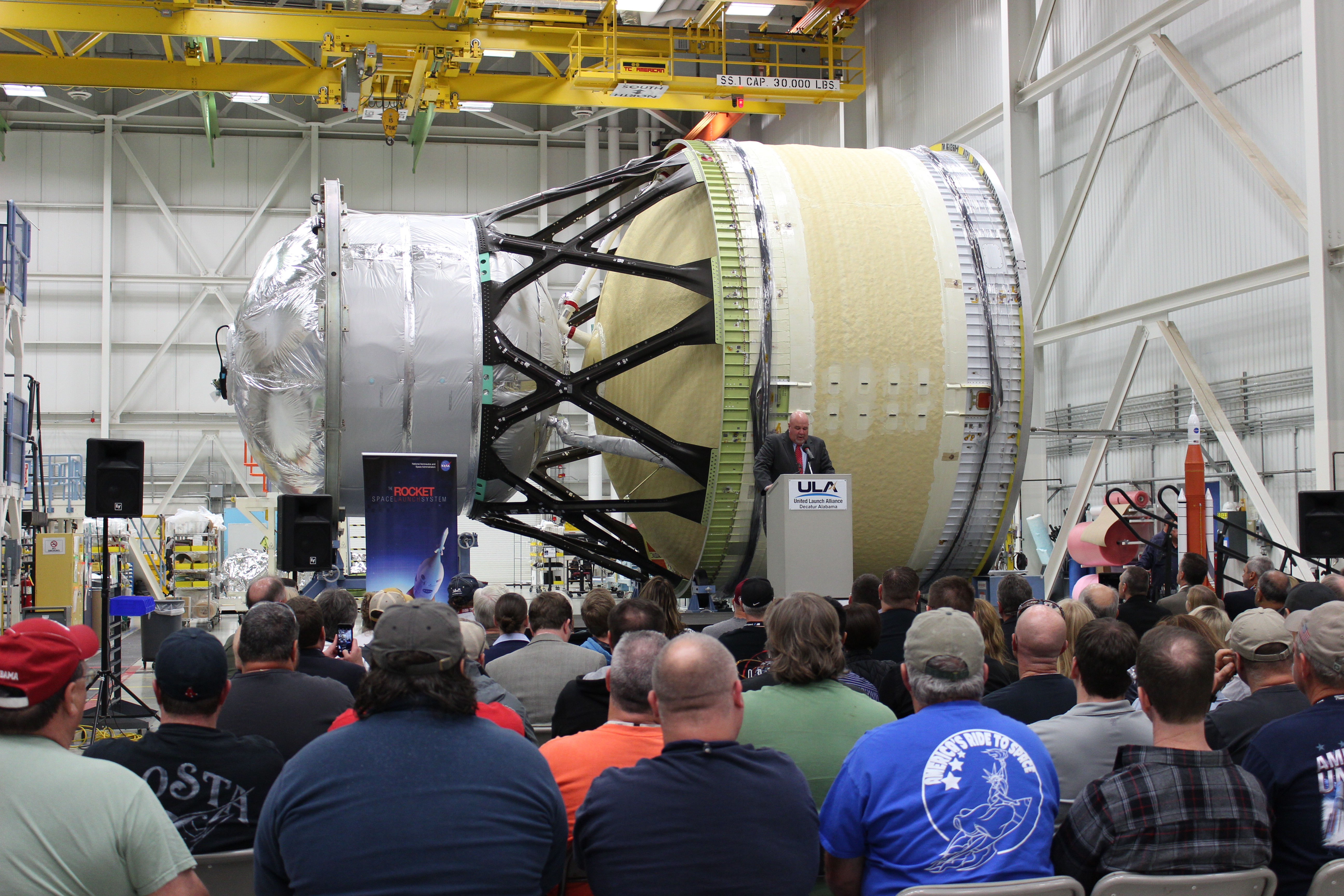A structural test article of the interim cryogenic propulsion stage (ICPS) for NASA’s new deep-space exploration rocket, the Space Launch System (SLS), has been completed at United Launch Alliance in Decatur, Alabama, prior to handover to the Boeing Company of Chicago. Boeing is the prime contractor for the SLS core stage.
The first flight test of the SLS, called Exploration Mission-1, will feature a Block 1 configuration for a 70-metric-ton (77-ton) lift capability and carry an uncrewed Orion spacecraft beyond low-Earth orbit to test the performance of the integrated system. The ICPS is the liquid oxygen/liquid hydrogen-based system that will give Orion the big, in-space push needed on that mission to fly beyond the moon before it returns to Earth.
The ICPS structural test article ultimately will move to NASA’s Marshall Space Flight Center in Huntsville, Alabama, where it will join other structural test articles and simulators that make up the upper portion of the rocket. Engineers will stack the structural test articles and move the 56-foot-tall structure to a test stand to verify the integrity of the hardware and ensure it can withstand the loads it may experience during flight.
“Not only is the test version of the ICPS complete, but we’ve also started building ICPS hardware for the first flight of SLS,” said Steve Creech, deputy manager of the Spacecraft and Payload Integration & Evolution Office at Marshall, which manages the SLS Program for the agency. “To date, we have fabricated hydrogen tank domes, tank skins and hydrogen tank cylinders. We’re well on our way to being ready for flight.”

